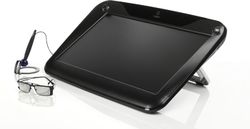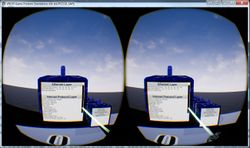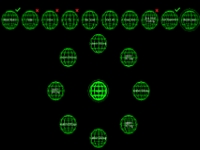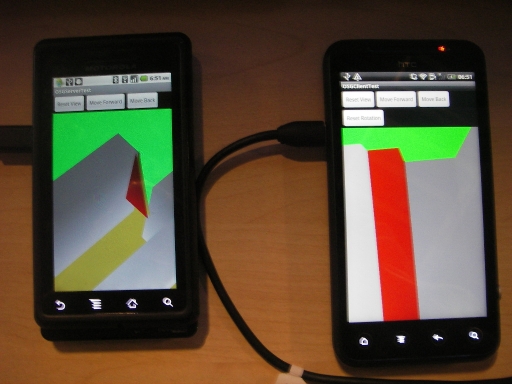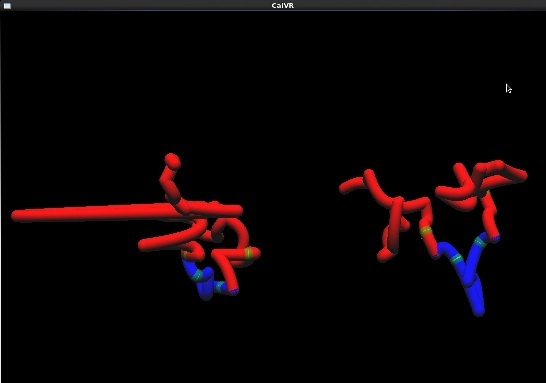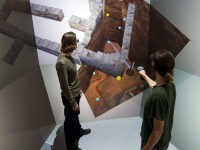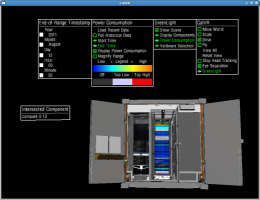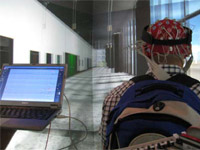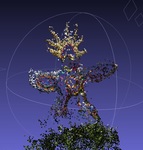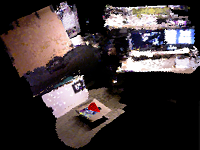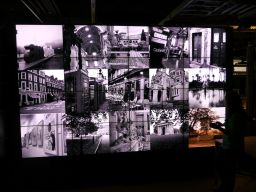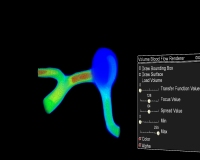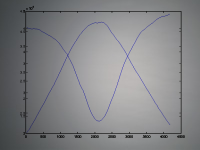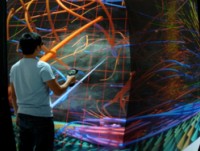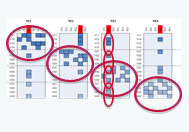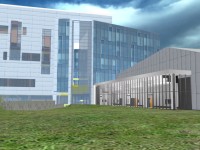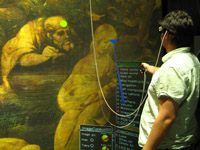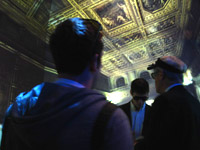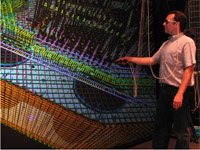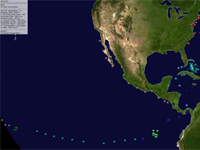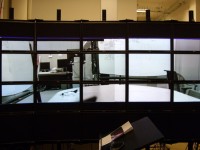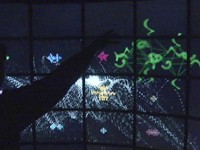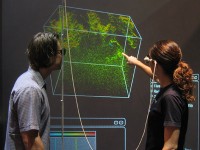Difference between revisions of "Past Projects"
From Immersive Visualization Lab Wiki
| Line 1: | Line 1: | ||
| − | ===[[ | + | ===[[Fringe Physics]] (Robert Maloney, 2014-2015)=== |
| + | <table> | ||
| + | <tr> | ||
| + | <td>[[Image:PhysicsLab_FinalScene.png|250px]]</td> | ||
| + | <td></td> | ||
| + | </tr> | ||
| + | </table> | ||
| + | <hr> | ||
| + | ===[[Boxing Simulator]] (Russell Larson, 2014)=== | ||
| + | <table> | ||
| + | <tr> | ||
| + | <td>[[Image:Boxer.png|250px]]</td> | ||
| + | <td></td> | ||
| + | </tr> | ||
| + | </table> | ||
| + | <hr> | ||
| + | |||
| + | ===[[Parallel Raytracing]] (Rex West, 2014)=== | ||
| + | <table> | ||
| + | <tr> | ||
| + | <td>[[Image:NightSky_Frame_Introduction_01.png|250px]]</td> | ||
| + | <td></td> | ||
| + | </tr> | ||
| + | </table> | ||
| + | <hr> | ||
| + | |||
| + | ===[[Altered Reality]] (Jonathan Shamblen, Cody Waite, Zach Lee, Larry Huynh, Liz Cai 2013)=== | ||
| + | <table> | ||
| + | <tr> | ||
| + | <td>[[Image:AR.jpg|250px]]</td> | ||
| + | <td></td> | ||
| + | </tr> | ||
| + | </table> | ||
| + | <hr> | ||
| + | |||
| + | ===[[Focal Stacks]] (Jurgen Schulze, 2013)=== | ||
| + | <table> | ||
| + | <tr> | ||
| + | <td>[[Image:Coral-thumbnail.png|250px]]</td> | ||
| + | <td>SIO will soon have a new microscope which can generate focal stacks faster than before. We are working on algorithms to visualize and analyze these focal stacks.</td> | ||
| + | </tr> | ||
| + | </table> | ||
| + | <hr> | ||
| + | |||
| + | ===[[Android Head Tracking]] (Ken Dang, 2013)=== | ||
| + | <table> | ||
| + | <tr> | ||
| + | <td>[[Image:android-head-tracking2-250.jpg]]</td> | ||
| + | <td>The Project Goal is to create a Android App that would use face detection algorithms to allows head tracking on mobile devices</td> | ||
| + | </tr> | ||
| + | </table> | ||
| + | <hr> | ||
| + | |||
| + | ===[[Zspace Linux Fix | Automatic Stereo Switcher for the ZSpace]] (Matt Kubasak, Thomas Gray, 2013-2014)=== | ||
| + | <table> | ||
| + | <tr> | ||
| + | <td>[[Image:ZspaceProduct.jpg|250px]]</td> | ||
| + | <td>We created an Arduino-based solution to fix the problem that in Linux the Zspace's left and right views are initially in random order. The Arduino, along with custom software, is used to sense which eye is displayed when, so that CalVR can switch the eyes if necessary, in order to show a correct stereo image.</td> | ||
| + | </tr> | ||
| + | </table> | ||
| + | <hr> | ||
| + | |||
| + | ===[[ZSculpt | ZSculpt - 3D Sculpting with the Leap]] (Thinh Nguyen, 2013)=== | ||
| + | <table> | ||
| + | <tr> | ||
| + | <td>[[Image:zsculpt-250.jpg]]</td> | ||
| + | <td>The goal of this project is to explore the use of the Leap Motion device for 3D sculpting.</td> | ||
| + | </tr> | ||
| + | </table> | ||
| + | <hr> | ||
| + | |||
| + | ===[[Magic Lens]] (Tony Chan, Michael Chao, 2013)=== | ||
| + | <table> | ||
| + | <tr> | ||
| + | <td>[[Image:MagicLens2.jpg]]</td> | ||
| + | <td>The goal of this project is to research the use of smart phones in a virtual reality environment.</td> | ||
| + | </tr> | ||
| + | </table> | ||
| + | <hr> | ||
| + | |||
| + | ===[[Pose Estimation for a Mobile Device]] (Kuen-Han Lin, 2013)=== | ||
| + | <table> | ||
| + | <tr> | ||
| + | <td>[[Image:kitchen-250.jpg]]</td> | ||
| + | <td>The goal of this project is to develop an algorithm which runs on a PC to estimate the pose of a mobile Android device, linked via wifi.</td> | ||
| + | </tr> | ||
| + | </table> | ||
| + | <hr> | ||
| + | |||
| + | ===[[StreamingGraphics | Multi-User Graphics with Interactive Control (MUGIC)]] (Shahrokh Yadegari, Philip Weber, Andy Muehlhausen, 2012-)=== | ||
| + | <table> | ||
| + | <tr> | ||
| + | <td>[[Image:TD_performance-250.jpg]]</td> | ||
| + | <td>Allow users simplified and versatile access to CalVR systems via network rendering commands. Users can create computer graphics in their own environments and easily display the output on any CalVR wall or system. [http://www.youtube.com/watch?v=7-q8cl9EUD4&noredirect=1 See the project in action], and [http://www.youtube.com/watch?v=8bS0Borb-f8&noredirect=1 a condensed lecture on the mechanisms.]</td> | ||
| + | </tr> | ||
| + | </table> | ||
| + | <hr> | ||
| + | |||
| + | ===[[PanoView360]] (Andrew Prudhomme, Dan Sandin, 2010-)=== | ||
| + | <table> | ||
| + | <tr> | ||
| + | <td>[[Image:panoview-in-tourcave-250.jpg]]</td> | ||
| + | <td>Researchers at UIC/EVL and UCSD/Calit2 have developed a method to acquire very high resolution, surround and stereo panorama images using dual SLR cameras. This VR application allows viewing these approximately gigabyte sized images in real-time and supports real-time changes of the viewing direction and zooming.</td> | ||
| + | </tr> | ||
| + | </table> | ||
| + | <hr> | ||
| + | |||
| + | ===[[VRDPI | VR Deep Packet Inspector]] (Marlon West, 2017)=== | ||
<table> | <table> | ||
<tr> | <tr> | ||
Revision as of 00:31, 7 December 2020
Fringe Physics (Robert Maloney, 2014-2015)
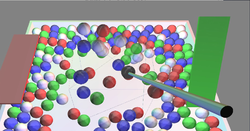 |
Boxing Simulator (Russell Larson, 2014)
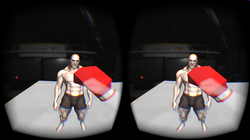 |
Parallel Raytracing (Rex West, 2014)
 |
Altered Reality (Jonathan Shamblen, Cody Waite, Zach Lee, Larry Huynh, Liz Cai 2013)
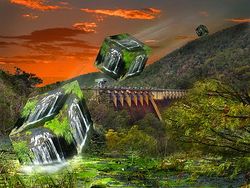 |
Focal Stacks (Jurgen Schulze, 2013)
 |
SIO will soon have a new microscope which can generate focal stacks faster than before. We are working on algorithms to visualize and analyze these focal stacks. |
Android Head Tracking (Ken Dang, 2013)
| The Project Goal is to create a Android App that would use face detection algorithms to allows head tracking on mobile devices |
Automatic Stereo Switcher for the ZSpace (Matt Kubasak, Thomas Gray, 2013-2014)
ZSculpt - 3D Sculpting with the Leap (Thinh Nguyen, 2013)
 |
The goal of this project is to explore the use of the Leap Motion device for 3D sculpting. |
Magic Lens (Tony Chan, Michael Chao, 2013)
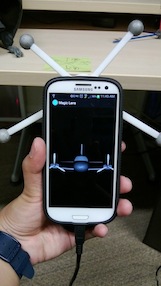 |
The goal of this project is to research the use of smart phones in a virtual reality environment. |
Pose Estimation for a Mobile Device (Kuen-Han Lin, 2013)
 |
The goal of this project is to develop an algorithm which runs on a PC to estimate the pose of a mobile Android device, linked via wifi. |
Multi-User Graphics with Interactive Control (MUGIC) (Shahrokh Yadegari, Philip Weber, Andy Muehlhausen, 2012-)
 |
Allow users simplified and versatile access to CalVR systems via network rendering commands. Users can create computer graphics in their own environments and easily display the output on any CalVR wall or system. See the project in action, and a condensed lecture on the mechanisms. |
PanoView360 (Andrew Prudhomme, Dan Sandin, 2010-)
VR Deep Packet Inspector (Marlon West, 2017)
| Explore the network communications in Virtual Reality |
MoveInVR (Lachlan Smith, 2016)
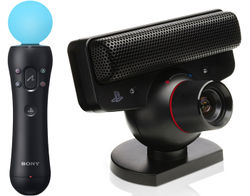 |
If you want to use the Sony Move as a 3D controller for the PC look here. |
Rendezvous for Glass (Qiwen Gao, 2014)
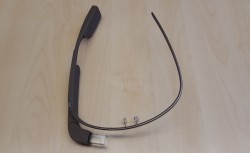 |
GoPro Synchronization (Thomas Gray, 2013)
 |
The goal of this project is to create a multi-camera video capture system. |
AndroidAR (Kristian Hansen, Mads Pedersen, 2012)
 |
Tracked Android phones are used to view 3D models and to draw in 3D. |
ArtifactVis with Android Device (Sahar Aseeri, 2012)
 |
In this project, an Android device is used to control the ArtifactVis application and to view images of the artifacts on the mobile device. |
Bubble Menu (Cathy Hughes, 2012)
Multi-user virtual reality on mobile phones (James Lue, 2012-2013)
Mobile Old Town Osaka Viewer (Sumin Wang, 2012)
3D Chromosome Viewer (Yixin Zhu, 2012)
CameraFlight (William Seo, 2012)
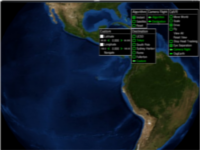 |
This project's goal is to create automatic camera flights from one place to another in osgEarth. |
AppGlobe Infrastructure (Chris McFarland, Philip Weber, 2012)
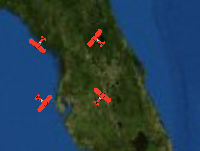 |
This project's goal is to create an application switcher for osgEarth-based CalVR plugins. |
GUI Sketching Tool (Cathy Hughes, Andrew Prudhomme, 2012)
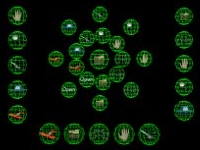 |
This project's goal is to develop a 3D sketching tool for a VR GUI. |
San Diego Wildfires (Philip Weber, Jessica Block, 2011)
ArtifactVis (Kyle Knabb, Jurgen Schulze, Connor DeFanti, 2008-2012)
OpenAL Audio Server (Shreenidhi Chowkwale, Summer 2011)
 |
A Linux-based audio server that uses the OpenAL API to deliver surround sound to virtual visualization environments. |
GreenLight BlackBox 2.0 (John Mangan, Alfred Tarng, 2011-2012)
ScreenMultiViewer (John Mangan 2011)
 |
A display mode within CalVR that allows two users to simultaneously use head trackers within either the StarCAVE or Nexcave, with minimal immersion loss. |
CaveCAD (Lelin Zhang 2009-2011)
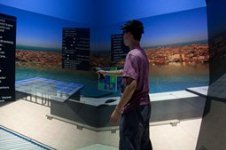 |
Calit2 researcher Lelin ZHANG provides architect designers with pure immersive 3D experience in virtual reality environment of StarCAVE. |
Neuroscience and Architecture (Daniel Rohrlick, Michael Bajorek, Mabel Zhang, Lelin Zhang 2007-2011)
 |
This project implements an Android phone based navigaton tool for the CalVR environment. |
Ground Penetrating Radar (Philip Weber, Albert Lin, 2011)
3D Reconstruction of Photographs (Matthew Religioso, 2011)
Real-Time Geometry Scanning System (Daniel Tenedorio, 2011)
Real-Time Meshing of Dynamic Point Clouds (Robert Pardridge, James Lue, 2011)
LSystems (Sarah Larsen 2011)
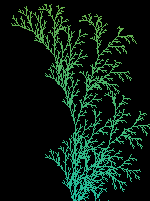 |
Creates an LSystem and displays it with either line or cylinder connections |
Android Controller (Jeanne Wang 2011)
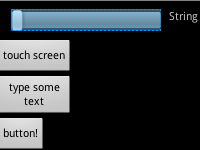 |
An Android based controller for a visualization system such as StarCave or a multiscreen grid. |
Object-Oriented Interaction with Large High Resolution Displays (Lynn Nguyen 2011)
MatEdit (Khanh Luc, 2011)
Kinect UI for 3D Pacman (Tony Lu, 2011)
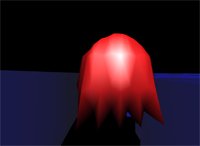 |
An experimentation with the Kinect to implement a device free, gesture controlled user interface in the StarCAVE to run a 3D Pacman game. |
TelePresence (Seth Rotkin, Mabel Zhang, 2010-2011)
GreenLight Blackbox (Mabel Zhang, Andrew Prudhomme, Seth Rotkin, Philip Weber, Grant van Horn, Connor Worley, Quan Le, Hesler Rodriguez, 2008-2011)
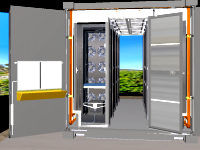 |
We created a 3D model of the SUN Mobile Data Center which is a core component of the instrument procured by the GreenLight project. We added an on-line connection to the physical container to display the output of the power modules. The project was demonstrated at SIGGRAPH, ISC, and Supercomputing. |
Volumetric Blood Flow Rendering (Yuri Bazilevs, Jurgen Schulze, Alison Marsden, Greg Long, Han Kim 2011)
Meshing and Texturing Point Clouds (Robert Pardridge, Vikash Nandkeshwar, James Lue, 2011)
 |
These students are using data from the previous PhotosynthVR project to create 3D geometry and textures. |
BloodFlow (Yuri Bazilevs, Jurgen Schulze, Alison Marsden, Ming-Chen Hsu, Kenneth Benner, Sasha Koruga; 2009-2010)
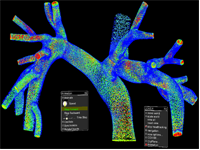 |
In this project, we are working on visualizing the blood flow in an artery, as simulated by Professor Bazilev at UCSD. Read the Blood Flow Manual for usage instructions. Videos and pictures of the visualizations in 2D can be found here, and the corresponding iPhone versions of the videos can be downloaded here. |
PanoView360 (Andrew Prudhomme, 2008-2010)
 |
In collaboration with Professor Dan Sandin from EVL, Andrew created a COVISE plugin to display photographer Richard Ainsworth's panoramic stereo images in the StarCAVE and the Varrier. |
PhotosynthVR (Sasha Koruga, Haili Wang, Phi Nguyen, Velu Ganapathy; 2009)
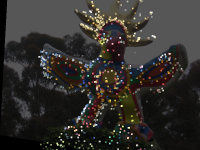 |
UCSD Sasha Koruga has created a Photosynth-like system with which he can display a number of photographs in the StarCAVE. The images appear and disappear as the user moves around the photographed object. Read the PhotosynthVR Manual for usage instructions. |
Multi-Volume Rendering (Han Kim, 2009)
 |
The goal of multi-volume rendering is to visualize multiple volume data sets. Each volume has three or more channels. |
How Much Information (Andrew Prudhomme, 2008-2009)
 |
In this project we visualize the data from various collaborating companies which provide us with data stored on harddisks or data transferred over networks. In the first stage, Andrew created an application which can display the directory structures of 70,000 harddisk drives of Microsoft employees, sampled over the course of five years. The visualization uses an interactive hyperbolic 3D graph to visualize the directory trees and to compare different users' trees, and it uses various novel data display methods like wheel graphs to display file sizes, etc. More information about this project can be found at [1]. |
Hotspot Mitigation (Jordan Rhee, 2008-2009)
ATLAS in Parallel (Ruth West, Daniel Tenedorio, Todd Margolis, 2008-2009)
Animated Point Clouds (Daniel Tenedorio, Rachel Chu, Sasha Koruga, 2008)
6DOF Tracking with Wii Remotes (Sage Browning, Philip Weber, 2008)
Spatialized Sound (Toshiro Yamada, Suketu Kamdar, 2008)
Video in Virtual Environments (Han Kim, 2008-2010)
LOOING/ORION (Philip Weber, 2007-2009)
OssimPlanet (Philip Weber, Jurgen Schulze, 2007)
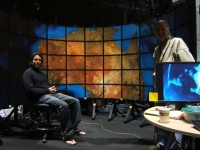 |
In this project we ported the open source OssimPlanet library to COVISE, so that it can run in our VR environments, including the Varrier tiled display wall and the StarCAVE. |
CineGrid (Leo Liu, 2007)
Virtual Calit2 Building (Daniel Rohrlick, Mabel Zhang, 2006-2009)
Interaction with Multi-Spectral Images (Philip Weber, Praveen Subramani, Andrew Prudhomme, 2006-2009)
Finite Elements Simulation (Fabian Gerold, 2008-2009)
Palazzo Vecchio (Philip Weber, 2008)
Virtual Architectural Walkthroughs (Edward Kezeli, 2008)
NASA (Andrew Prudhomme, 2008)
Digital Lightbox (Philip Weber, 2007-2008)
Research Intelligence Portal (Alex Zavodny, Andrew Prudhomme, 2007-2008)
New San Francisco Bay Bridge (Andre Barbosa, 2007-2008)
Birch Aquarium (Daniel Rohrlick, 2007-2008)
CAMERA Meta-Data Visualization (Sara Richardson, Andrew Prudhomme, 2007-2008)
Depth of Field (Karen Lin, 2007)
HD Camera Array (Alex Zavodny, Andrew Prudhomme, 2007)
Atlas in Silico for Varrier (Ruth West, Iman Mostafavi, Todd Margolis, 2007)
Screen (Noah Wardrip-Fruin, 2007)
 |
Under the guidance of Noah Wardrip-Fruin and Jurgen Schulze, Ava Pierce, David Coughlan, Jeffrey Kuramoto, and Stephen Boyd are adapting the multimedia art installation Screen from the four-wall cave system at Brown University to the StarCAVE. This piece was displayed at SIGGRAPH 2007 and was the first virtual reality application to demoed in the StarCAVE. It was also displayed at the Beall Center at UC Irvine in the fall of 2007. For this purpose, it was ported to a single stereo wall display. |
Children's Hospital (Jurgen Schulze, 2007)
 |
From our collaboration with Dr. Peter Newton from San Diego's Children's Hospital we have a few computer tomography (CT) data sets of childerens' upper bodies, showing irregularities of their spines. |
Super Browser (Vinh Huynh, Andrew Prudhomme, 2006)
Cell Structures (Iman Mostafavi, 2006)
Terashake Volume Visualization (Jurgen Schulze, 2006)
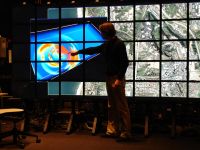 |
As part of the NSF funded Optiputer project, Jurgen visualized part of the 4.5 terabyte TeraShake earthquake data set on a the 100 megapixel LambdaVision display at Calit2. For this project, he integrated his volume visualization tool VOX into EVL's SAGE. |
Protein Visualization (Philip Weber, Andrew Prudhomme, Krishna Subramanian, Sendhil Panchadsaram, 2005-2009)
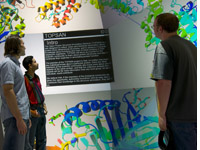 |
A VR application to view protein structures from UCSD Professor Philip Bourne's Protein Data Bank (PDB). The popular molecular biology toolkit PyMol is used to create the 3D models of the PDB files. Our application also supports protein alignment, an aminoacid sequence viewer, integration of TOPSAN annotations, as well as a variety of visualization modes. Among the users of this application are: UC Riverside (Peter Atkinson), UCSD Pharmacy (Zoran Radic), Scripps Research Institute (James Fee/Jon Huntoon). |
Earthquake Visualization (Jurgen Schulze, 2005)
 |
Along with Debi Kilb from the Scripps Institution of Oceanography (SIO) we visualized 3D earthquake locations on a world-wide scale. |
